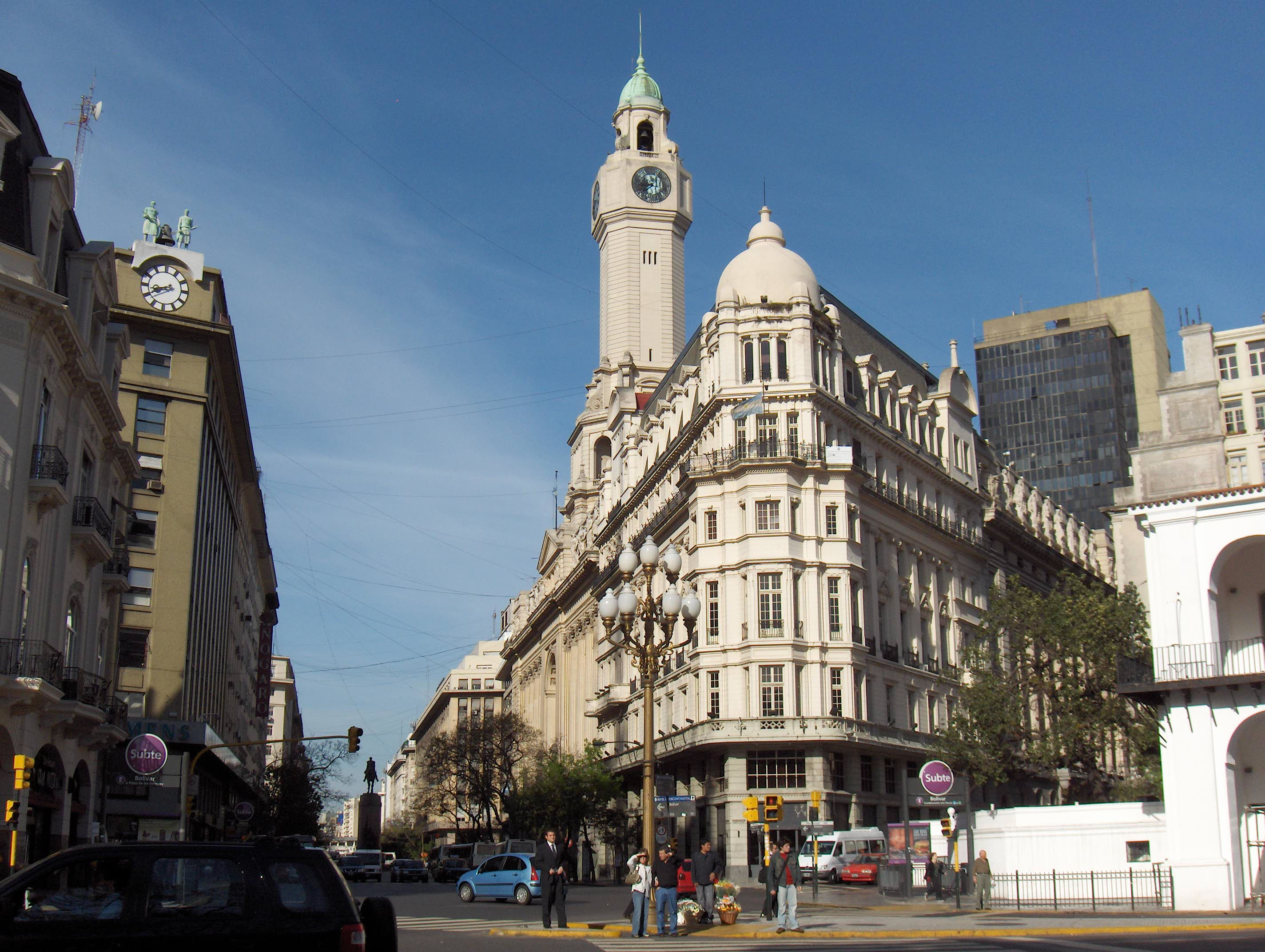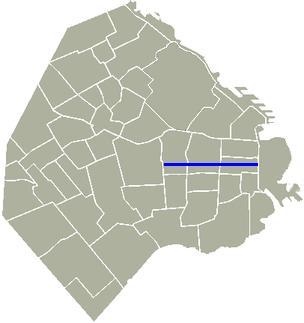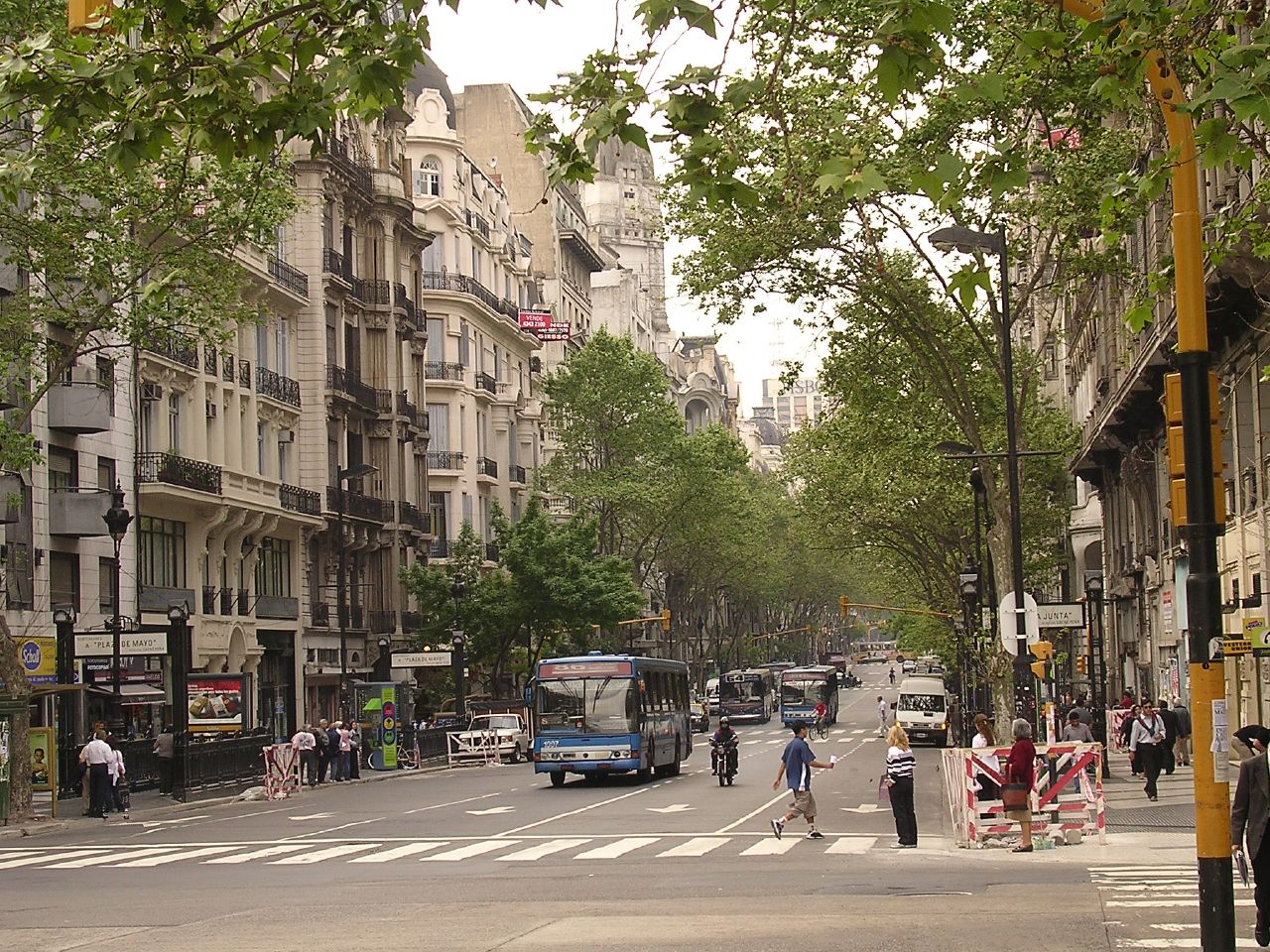|
Montserrat, Buenos Aires
Monserrat or Montserrat () is a neighbourhood in the east of the Buenos Aires central business district, Buenos Aires CBD. The district features some of the most important public buildings in Buenos Aires, including city hall, the city legislature, Casa Rosada, the Colegio Nacional de Buenos Aires and the Libertador Building (Argentine Armed Forces, Ministry of Defense), among others. Avenida de Mayo runs through the Monserrat district, connecting Plaza de Mayo and the Plaza de los Dos Congresos (Congressional Plaza). A block, or two, south of the Plaza de Mayo, the older section of Monserrat begins. This is Buenos Aires' oldest neighborhood and even today, very little of the cityscape there is less than a hundred years old (except along Avenida Belgrano, Belgrano Avenue), thereby making a nearly seamless transition to the likewise historic San Telmo district, to the south. History The Monserrat area traces its origins to the foundation of Buenos Aires itself, when, in 158 ... [...More Info...] [...Related Items...] OR: [Wikipedia] [Google] [Baidu] |
Barrios And Communes Of Buenos Aires
The city of Buenos Aires is formally divided in 48 ''barrios'' (neighborhoods), grouped into 15 ''comunas'' (communes), which are defined as "units of decentralized political and administrative management governed by designated residents". The city proper (excluding the suburbs and exurbs that form Greater Buenos Aires), had 2,891,082 inhabitants as of 2010. Overview Sanitary regions The borders of the sanitary regions are aligned with the borders of the communes. * Region 1: C1, C3, C4 * Region 2: C7, C8, C9 * Region 3: C5, C6, C10, C11, C15 * Region 4: C2, C12, C13, C14 References External links Map of Buenos Aires' neighborhoods and communes {{Portal, Argentina Geography of Buenos Aires ... [...More Info...] [...Related Items...] OR: [Wikipedia] [Google] [Baidu] |
Catalan Language
Catalan () is a Western Romance languages, Western Romance language and is the official language of Andorra, and the official language of three autonomous communities of Spain, autonomous communities in eastern Spain: Catalonia, the Balearic Islands and the Valencian Community, where it is called ''Valencian language, Valencian'' (). It has semi-official status in the Italy, Italian ''comune'' of Alghero, and it is spoken in the Pyrénées-Orientales department of France and in two further areas in eastern Spain: the La Franja, eastern strip of Aragon and the Carche area in the Region of Murcia. The Catalan-speaking territories are often called the or "Països Catalans". The language evolved from Vulgar Latin in the Middle Ages around the eastern Pyrenees. It became the language of the Principality of Catalonia and the kingdoms of kingdom of Valencia, Valencia and Kingdom of Majorca, Mallorca, being present throughout the Mediterranean. Replaced by Spanish as a language of gov ... [...More Info...] [...Related Items...] OR: [Wikipedia] [Google] [Baidu] |
Saint Ignatius Church (Buenos Aires)
Saint Ignatius of Loyola' Church () is a Roman Catholic church situated at the Illuminated Block, in Buenos Aires's neighbourhood of Montserrat. The first building, which was made of adobe, was built by the Society of Jesus in 1675. The southern tower and the present facade were built in 1686, and the rest of the Church construction started in 1712. Today's church was completed in 1722 and consecrated in 1734. Saint Ignatius is the oldest church preserved in Buenos Aires, and was declared a National Historic Monument in 1942. [...More Info...] [...Related Items...] OR: [Wikipedia] [Google] [Baidu] |
Jesuit
The Society of Jesus (; abbreviation: S.J. or SJ), also known as the Jesuit Order or the Jesuits ( ; ), is a religious order (Catholic), religious order of clerics regular of pontifical right for men in the Catholic Church headquartered in Rome. It was founded in 1540 by Ignatius of Loyola and six companions, with the approval of Pope Paul III. The Society of Jesus is the largest religious order in the Catholic Church and has played significant role in education, charity, humanitarian acts and global policies. The Society of Jesus is engaged in evangelization and apostolic ministry in 112 countries. Jesuits work in education, research, and cultural pursuits. They also conduct retreats, minister in hospitals and parishes, sponsor direct social and humanitarian works, and promote Ecumenism, ecumenical dialogue. The Society of Jesus is consecrated under the patron saint, patronage of Madonna della Strada, a title of the Blessed Virgin Mary, and it is led by a Superior General of ... [...More Info...] [...Related Items...] OR: [Wikipedia] [Google] [Baidu] |
Juan De Garay
Juan de Garay (1528–1583) was a Spanish conquistador. Garay's birthplace is disputed. Some say it was in the city of Junta de Villalba de Losa in Castile, while others argue he was born in the area of Orduña (Basque Country). There's no birth certification whatsoever, though Juan De Garay regarded himself as somebody from Biscay (a region from the Basque Country). He served under the Crown of Castille, in the Viceroyalty of Peru. He was governor of Asunción (present day Paraguay) and founded a number of cities in present-day Argentina, many near the Paraná River area, including the second foundation of Buenos Aires, in 1580. Biography In 1543 he sailed to Peru with his uncle Pedro de Zárate in Viceroy Blasco Núñez Vela's first expedition. In 1561 he took part in the foundation of Santa Cruz de la Sierra. In 1568 he moved to Asunción where he attained political stature. The governor of Asunción sent him in April 1573, with a company of eighty men, on an expe ... [...More Info...] [...Related Items...] OR: [Wikipedia] [Google] [Baidu] |
Adelantado
''Adelantado'' (, , ; meaning 'advanced') was a title held by some Spain, Spanish nobles in service of their respective kings during the Middle Ages. It was later used as a military title held by some Spanish ''conquistadores'' of the 15th, 16th and 17th centuries. ''Adelantados'' were charter, granted directly by the monarch the right to become governors and judge, justices of a specific region, which they were charged with conquering, in exchange for funding and organizing the initial explorations, settlements and pacification of the target area on behalf of the Crown of Castile. These areas were usually outside the jurisdiction of an existing ''Audiencia Real, audiencia'' or viceroy, and ''adelantados'' were authorized to communicate directly with the Council of the Indies. The ''reconquista'' The term has its origins in the ''reconquista'' and comes from the phrase ''por adelantado'' (Spanish language, Spanish: 'in advance', although translations stating 'one who goes before' ... [...More Info...] [...Related Items...] OR: [Wikipedia] [Google] [Baidu] |
San Telmo
San Telmo ("Saint Pedro González Telmo") is the oldest ''Barrios of Buenos Aires, barrio'' (neighborhood) of Buenos Aires, Argentina. A well-preserved area of the Argentine metropolis, it hosts some of its oldest buildings. One of the birthplaces of tango, during the mid 20th century it was the Bohemian district with painters Atelier, ateliers and jazz clubs. Cafes, tango parlors and antique shops line the cobblestone streets, which are often filled with street artists and dancers. San Telmo's attractions include old churches (e.g. San Pedro Telmo), museums, food halls and stalls, antique stores and a semi-permanent antique fair (''Feria de San Telmo, Feria de Antigüedades'') in the main public square, Plaza Dorrego. Tango music, Tango-related activities for both locals and tourists are in the area.The ''"Manzana de las Luces"'' (Age of Enlightenment, "Enlightenment city block, [city] block") hosted several colonial institutions. History Known as San Pedro Heights during the 1 ... [...More Info...] [...Related Items...] OR: [Wikipedia] [Google] [Baidu] |
Avenida Belgrano
Avenida Belgrano is an avenue that runs through Montserrat, Balvanera and Almagro neighborhoods of Buenos Aires, Argentina. The avenue crosses other major avenues like Huergo, Paseo Colon, Diagonal Sur and 9 de Julio. The avenue was named in honor of Manuel Belgrano. Gallery File:Edificio Otto Wulff.JPG, View of Defensa street. File:Basílica del Rosario (Buenos Aires).JPG, Santo Domingo convent. File:Buenos Aires - Monserrat - Edificio Otto Wulf - 200604.jpg, Otto Wulf building. File:Diagonal Sur.jpg, Intersection with Diagonal Sur. File:Buenos_Aires_-_Avenida_Belgrano_-_Basílica_Santa_Rosa_de_Lima_-_20081204-a.jpg, Santa Rosa de Lima Basilic. File:Cuartel de Policía - Buenos Aires.JPG, Headquarters of Argentine Federal Police The Argentine Federal Police ( or PFA) is the national civil police force of the Argentine federal government. The PFA has detachments throughout the country. Until January 1, 2017, it also acted as the local law enforcement agency in the ... [...More Info...] [...Related Items...] OR: [Wikipedia] [Google] [Baidu] |
Avenida De Mayo
May Avenue () is an avenue in Buenos Aires, capital of Argentina. It connects the Plaza de Mayo with Congressional Plaza, and extends in a west–east direction before merging into Rivadavia Avenue. History and overview Built on an initiative by Mayor Torcuato de Alvear, work began in 1885 and was completed in 1894. The avenue is often compared with ''La Gran Vía'' in Madrid, although the Spanish avenue was built later (1910). It is also compared to those in Paris or Barcelona due to its sophisticated buildings of Art Nouveau, neoclassic and eclectic styles. The avenue was named in honor of the May Revolution of 1810 (the event that led to Argentine Independence). The site of the assembly that touched off the revolution (the Buenos Aires Cabildo) was partially demolished in 1888 to make way for the avenue's entry into Plaza de Mayo. The avenue's layout, built through existing urban blocks instead of via the widening of a parallel street, was designed by the municipal pub ... [...More Info...] [...Related Items...] OR: [Wikipedia] [Google] [Baidu] |
Pasaje La Rural (1926)
Pasaje is a town in the lowlands of the El Oro Province, Ecuador. Pasaje is the seat of the Pasaje Canton. It is located on the border of the Jubones River. Climate References {{Reflist External links mipasaje.comWebsite with local information in Spanish Spanish might refer to: * Items from or related to Spain: **Spaniards are a nation and ethnic group indigenous to Spain **Spanish language, spoken in Spain and many countries in the Americas **Spanish cuisine **Spanish history **Spanish culture ... Populated places in El Oro Province ... [...More Info...] [...Related Items...] OR: [Wikipedia] [Google] [Baidu] |
Diagonal Sur Buenos Aires
In geometry, a diagonal is a line segment joining two vertices of a polygon or polyhedron, when those vertices are not on the same edge. Informally, any sloping line is called diagonal. The word ''diagonal'' derives from the ancient Greek διαγώνιος ''diagonios'', "from corner to corner" (from διά- ''dia-'', "through", "across" and γωνία ''gonia'', "corner", related to ''gony'' "knee"); it was used by both Strabo and Euclid to refer to a line connecting two vertices of a rhombus or cuboid, and later adopted into Latin as ''diagonus'' ("slanting line"). Polygons As applied to a polygon, a diagonal is a line segment joining any two non-consecutive vertices. Therefore, a quadrilateral has two diagonals, joining opposite pairs of vertices. For any convex polygon, all the diagonals are inside the polygon, but for re-entrant polygons, some diagonals are outside of the polygon. Any ''n''-sided polygon (''n'' ≥ 3), convex or concave, has \tfrac ''total'' diago ... [...More Info...] [...Related Items...] OR: [Wikipedia] [Google] [Baidu] |





